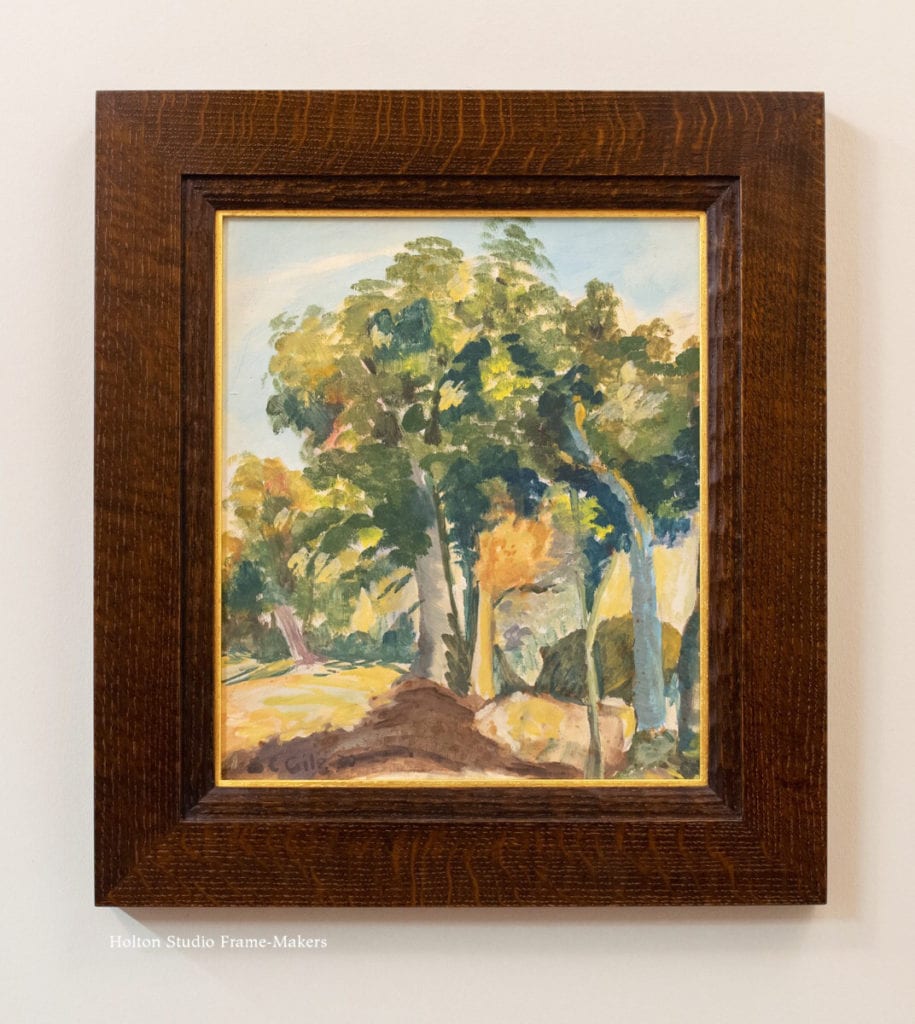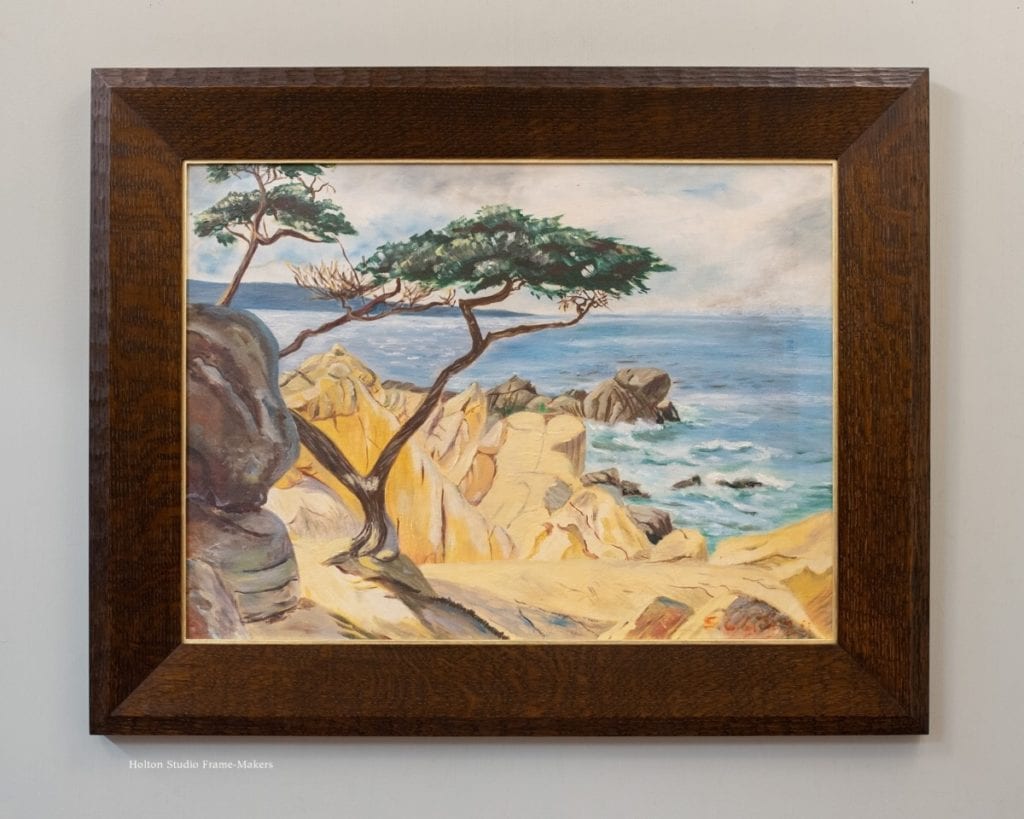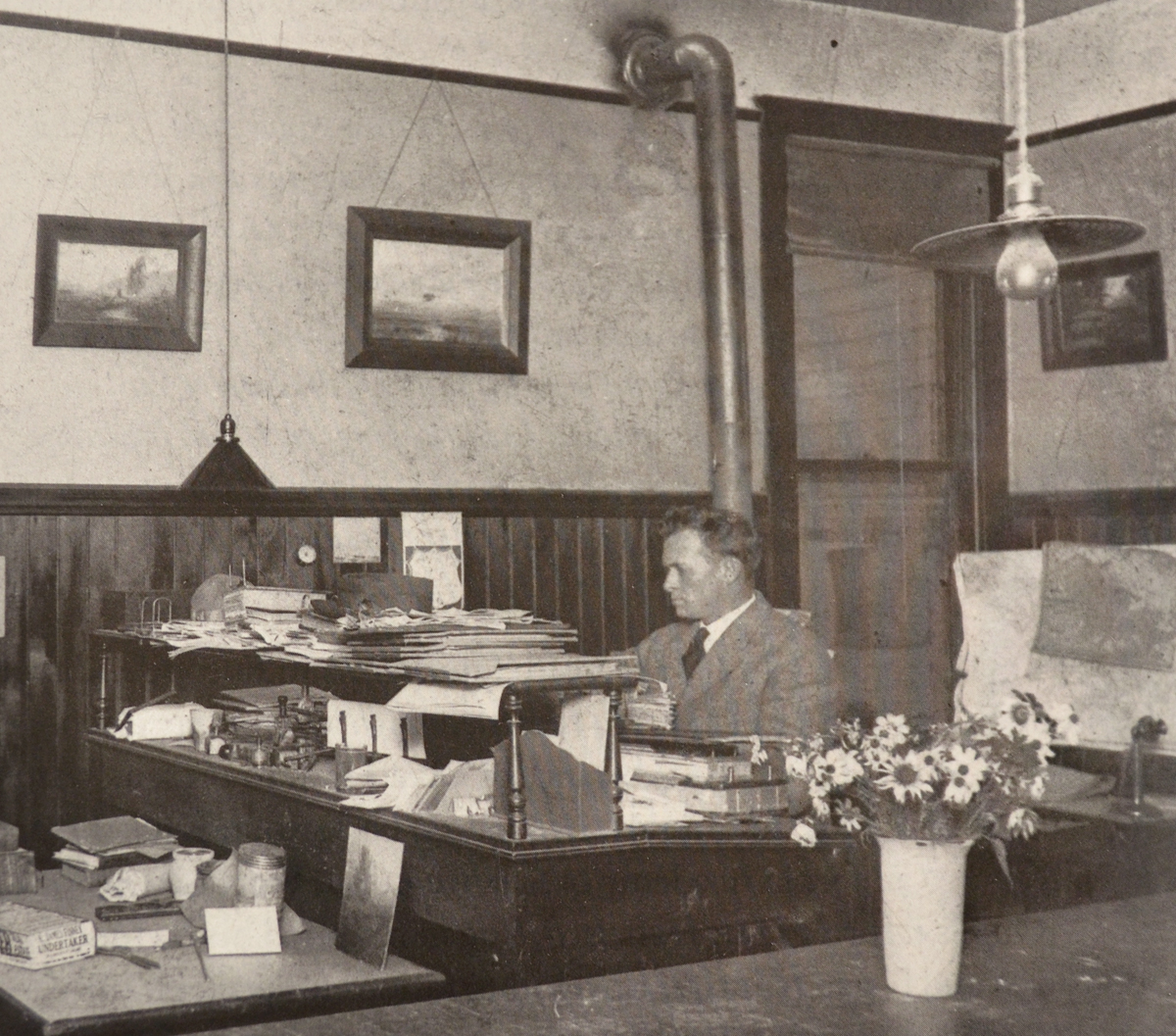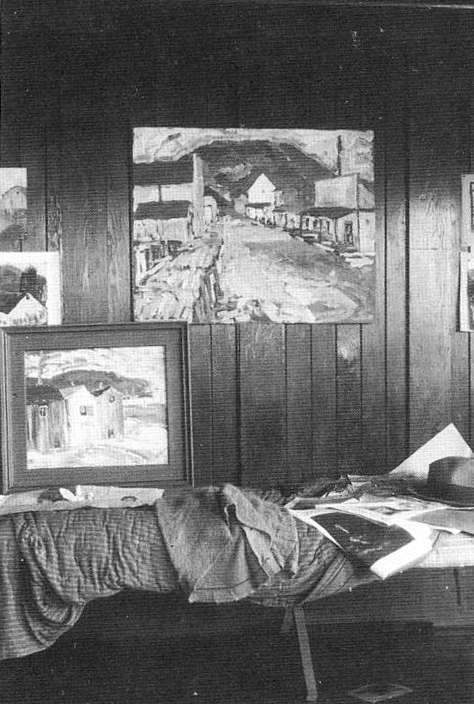This little 12-1/2″ x 10-1/2″ oil on board is by Selden Connor Gile (1877-1947). Gile was the central member of Oakland’s Society of Six, a remarkable and passionate group of plein air painters active in the teens and ‘twenties. The other members were Louis Siegriest, Bernard Von Eichman, August Gay, William H. Clapp, and Maurice Logan. We framed this painting in a No. 1.4 CV—2-1/2″ in quartersawn white oak with Medieval Oak stain, and it has a gilt slip. The loose painting style called for a simple frame, but I wanted to enhance the irregular dabs of paint with carving, and to echo the rounded tree forms. The No. 1.4 CV is a very versatile design we use pretty often, but this is one of the best examples of it on a picture.
The same customer had another Gile, shown at right, which we framed in a 3″ wide No. 22 CV frame with a gilt slip.
Below is a 1915 picture of Gile in his office at Gladding, McBean and Co. in Oakland (the 140 year old company is now in Lincoln, CA), where he started working just a year before the Great Earthquake. The firm, according to art historian Nancy Boas, “was a major supplier of ceramic building materials, from pipes and bricks to architectural adornments, and would play a major role in the rebuilding of San Francisco after the 1906 earthquake.” Gile is surrounded by his paintings in dark wood frames.
Boas, in The Society of Six: California Colorists, writes that “The force of Selden Gile’s personality was the most important impetus to the Six during (the group’s) formative era.” Member Louis Siegriest’s reminiscence of the group at the moment of its formal inception opens Boas’s excellent book, and captures its gregarious character, with Gile at the center:
Gile was standing at the stove cooking a big roast beef full of garlic smelling up the room and taking a drink every now and then of his home brew. Gay was sitting off in the corner with his cup of wine, and we were all crowded in as usual, jammed in because the whole room was filled with stacks of canvases, some wet ones that get on your clothes; then in came Mr. Clapp with his ho, ho, ho and a neat little pack of his day’s paintings under his arm. Sooner or later von Eichman would come crashing in with some wild story or other. Logan came in later because he ate dinner at home. Being the youngest, I was mighty glad to be included. I always came with a new painting or two, which we’d prop up on the floor and all take a crack at. It was a fairly large room full of paintings standing on the floor against the walls and tacked up. Every once in a while someone would pick one up and comment about it. Then there was always some argument going on about painters we’d run into during the day.Inside Seldon Gile’s Oakland home—the “chow house.” Again, we see the artist’s preference for dark wood frames.
Well, this particular night we all crowded around the table, ready to dig in because we always liked Gile’s cooking, and Mr. Clapp was talking about this bunch of painters up in Canada he used to know who were now calling themselves the Group of Seven and were starting to show together. And Gile said why don’t we have a group, why don’t the six of us have a group and show together?
No doubt, to Percy Gray, the subject of my last post, who was just 8 years older than Gile, the Society of Six was infected with the “insanity” of modernism. But the enthusiasm with which the Six embraced the examples of the impressionists and post-impressionists—which, by the time they reached California, were already passé—is hard to resist. Who could complain about technical shortcomings in the face of such a exuberant passion for the land and life of California and all it promised?
« Back to Blog


